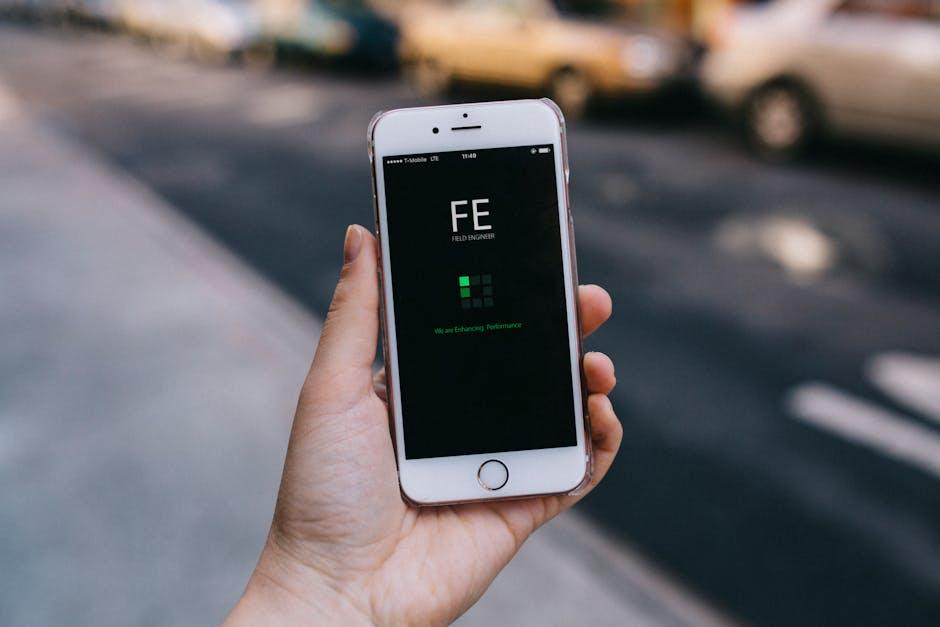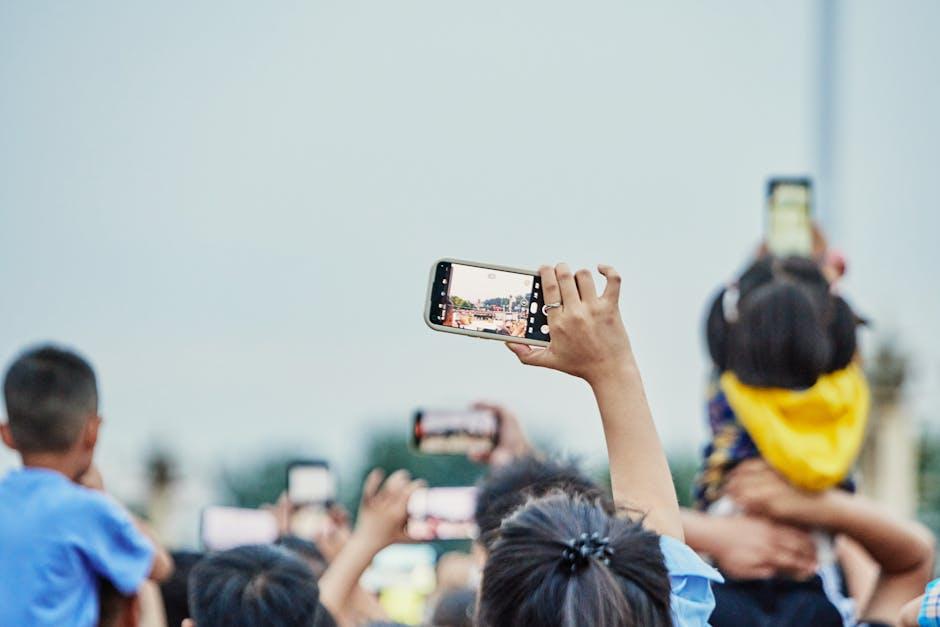In the palm of our hands lies a gateway to a world of endless information, instant connections, and rapid responses-the smartphone. These sleek devices have seamlessly woven themselves into the fabric of daily life, transforming how we interact, learn, and decide. But as notifications ping and apps flash with updates, a subtle question emerges: how do smartphones shape the split-second choices we make in real time? Exploring this intersection between technology and human cognition reveals a complex dance where convenience and distraction coexist, influencing the very essence of how decisions unfold in the moment.
Impact of Immediate Information Access on Decision Speed

The ability to access information instantly through smartphones has revolutionized the way decisions are made in real-time scenarios. Whether it’s choosing a restaurant, responding to emergencies, or navigating traffic, having a wealth of data at your fingertips accelerates the entire decision process. This immediate access eliminates the need for prolonged research or guesswork, allowing individuals to weigh options quickly and efficiently. Crucially, the speed boost comes not just from getting information fast, but from the seamless integration of data with intuitive interfaces and real-time updates.
Several factors contribute to this newfound agility in decision-making:
- Real-time notifications provide constant updates without delay.
- Location-based services tailor choices relevant to the user’s immediate surroundings.
- Collaborative tools enable quick sharing and feedback from social networks or work groups.
The following table outlines typical decision scenarios, demonstrating how smartphones condense what once took minutes or even hours into mere seconds:
| Scenario | Decision Time Before Smartphones | Decision Time After Smartphones |
|---|---|---|
| Choosing Travel Routes | 15-30 minutes | 2-5 minutes |
| Emergency Response | 10-15 minutes | Under 3 minutes |
| Purchasing Decisions | Hours to days | Minutes |
Balancing Distraction and Focus in High-Pressure Moments

In moments when every second counts, the tug-of-war between distraction and sharp concentration reaches its peak. Smartphones serve as a double-edged sword; they provide access to instant information, yet often fracture attention with alerts and notifications. The challenge lies in harnessing the device’s utility without succumbing to its interruptions. Strategic use of technology can tilt the balance, allowing decision-makers to stay focused while still being connected to critical updates.
To navigate this delicate equilibrium, consider these approaches:
- Custom Notification Settings: Silence non-essential alerts during crucial periods.
- Time-Block Usage: Designate brief intervals for checking devices, preventing constant disruptions.
- Pre-Load Critical Information: Prepare necessary data beforehand to reduce real-time searching.
- Mindfulness Practices: Engage in quick grounding exercises to regain focus when distracted.
| Strategy | Benefit | Example |
|---|---|---|
| Custom Notifications | Reduces alerts | Silent mode except urgent contacts |
| Time-Block Usage | Minimizes interruptions | Checking every 15 minutes |
| Pre-Load Data | Speeds decisions | Offline maps and schedules |
| Mindfulness | Restores focus | Breathing exercises |
Leveraging Smartphone Features for Enhanced Real-Time Judgments

Smartphones, equipped with a myriad of sensors and apps, serve as dynamic tools that significantly sharpen our real-time judgment abilities. Features like GPS, accelerometers, and real-time data analytics empower users to make smarter choices instantly-from navigating through traffic with precision to gauging weather conditions for outdoor plans. The convenience of having instant access to information, combined with intuitive interfaces, reduces cognitive load and helps prioritize decisions quickly and confidently.
Some key smartphone features that enhance real-time decision-making include:
- Live Notifications: Instant updates alert users to changes in schedules, emergencies, or relevant news, facilitating immediate responses.
- Augmented Reality (AR): Overlaying critical data on physical environments assists in spatial awareness and tasks such as shopping or troubleshooting.
- Voice Assistants: Hands-free interactions streamline decision processes when multitasking or during on-the-go scenarios.
| Feature | Benefit |
|---|---|
| GPS & Maps | Optimal routing & location tracking |
| Biometric Sensors | Health insights for well-being decisions |
| Push Notifications | Real-time alerts & timely info delivery |
Practical Tips to Maintain Clarity Amid Constant Connectivity

In today’s hyper-connected environment, carving out moments of mental space can drastically improve decision-making quality. Begin by setting designated tech-free zones during critical decision moments-turn off notifications and place your smartphone out of immediate reach. This simple act can block out the barrage of distractions that fragment your focus. Additionally, adopting a habit of scheduled check-ins with your devices, rather than constant monitoring, allows your brain to maintain clarity and avoid reactive thinking driven by immediate alerts or updates.
- Activate Do Not Disturb modes during meetings or problem-solving sessions.
- Use apps that limit screen time to reduce impulsive smartphone use.
- Practice micro-decisions offline to engage and strengthen your prefrontal cortex.
- Employ mindfulness techniques to stay present and grounded.
| Tip | Benefit | Example |
|---|---|---|
| Silent Mode | Reduces auditory disruptions | During work hours |
| Scheduled Check-Ins | Limits distraction frequency | Every 2 hours |
| Offline Micro-Decisions | Increases cognitive endurance | Choosing lunch menu without phone |
In Conclusion
In a world where every second counts, smartphones have woven themselves into the fabric of our decision-making processes, acting as both guides and gatekeepers of real-time choices. They amplify our reach to information and connect us instantly, yet they also challenge our ability to focus and discern. As we navigate this intricate dance between convenience and cognitive load, the true impact of smartphones on our decision-making remains a dynamic story – one that evolves with each notification, each alert, and each moment of mindful reflection. Ultimately, understanding this balance is key to harnessing the power of technology without losing touch with our own judgment.














